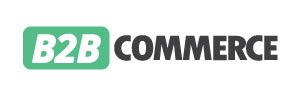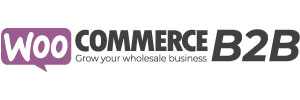B2B consumer portals have come to be a need in the digital age. However what goes into a good customer portal? What do your dealers and also suppliers require most – and what challenges should you keep an eye out for?
While every organization will answer these inquiries in a different way, below are a few top-level best practices.
1. Place the voice of the B2B client at the center of the Sage 200 Evolution B2B eCommerce project
As you’re putting together your B2B project, you’ll experience a great deal of voices within the organization. Your head of customer care possibly has a few suggestions concerning the website. Furthermore, advertising & marketing and sales might have points they intend to see (and a couple of they do not wish to see).
When you bring in IT, you’ll get ideas on exactly how the site must (or shouldn’t) share data with other systems.
Every internal stakeholder has a vital perspective. Trouble is, you can quickly forget the customer when you’re working as a mediator in between internal voices.
This is where some companies become perplexed. The Sage 200 Evolution B2B eCommerce has to do with the client first. Interior problems are very important, but if there’s conflict, you need to weigh internal voices meticulously against the requirements of genuine customers.
So just how do you discover what your suppliers as well as representatives really require?
It’s not nearly enough to run a survey prior to starting the task. You need to involve suppliers as well as distributors throughout the project itself, revealing them live, functioning software. You will be required to ask pointed concerns like, “Why can’t we introduce this Sage 200 Evolution B2B site today? Why will not it help you?”
Their solutions may shock you – but they’re necessary. The secret is to comply with a framework for iterative cycles of client feedback as well as software application configuration.
Hint: That’s what the Storehub.io approach is all about. It’s the crucial element to launching a Sage 200 Evolution B2B store that’s right for your consumers.
2. Begin with low-hanging fruit with your Sage 200 Evolution B2B integration (i.e. tracking orders and also invoices)
Where do you start as you change consumer experience?
This question will certainly squash you if you’re not careful.
Undoubtedly, huge transformation can be frustrating. But the secret is to limit the extent of your initial job. Instead of repairing every damaged window at once, you should start with low-hanging fruit. What can you fix in the next 1 month?
For lots of manufacturers, finishing phone, fax, and email dependence is a wonderful base. If your dealerships and suppliers are calling and also emailing to obtain routine status checks for orders and also invoices, why not create a Sage 200 Evolution B2B customer portal that equips them to self-serve?
3. Ensure that every user will see the correct information on your Sage 200 Evolution B2B eCommerce portal
A B2B portal isn’t much good if dealers and representatives will not utilize it.
And they won’t utilize it if it does not show their personalized information.
If you’re giving order and billing monitoring in the portal, then at the very least, every consumer requires to see exact historic data from Sage 200 Evolution. That means real-time status for every single order, line product, delivery, invoice, and also open accountancy thing. Your Sage 200 Evolution B2B consumer portal will certainly need to give this details immediately without producing more work for IT.
If you add online purchasing, it becomes much more complicated. Exactly how are you going to reveal the best agreement pricing to each logged-in dealership? If each supplier has individualized inventory calculations (called available to promise or ATP), just how are you going to provide that real-time information online?
Think of order mistakes, too – and also the price of hands-on callbacks. If your B2B website approves orders that Sage 200 Evolution declines, just how are you going to handle that? Do you have the added customer care personnel to take care of these issues?
These are all personalization issues, and they show the extraordinary complexity of customization in B2B. The demands here cover every data point that your client website provides to the customer.
You can fix every one of these problems with a Sage 200 Evolution to B2B eCommerce integration. But there’s an added challenge right here: A lot of IT groups can not take on the problem of maintaining such a robust integration.
Contact Storehub.io for a consultation today.
See also:












